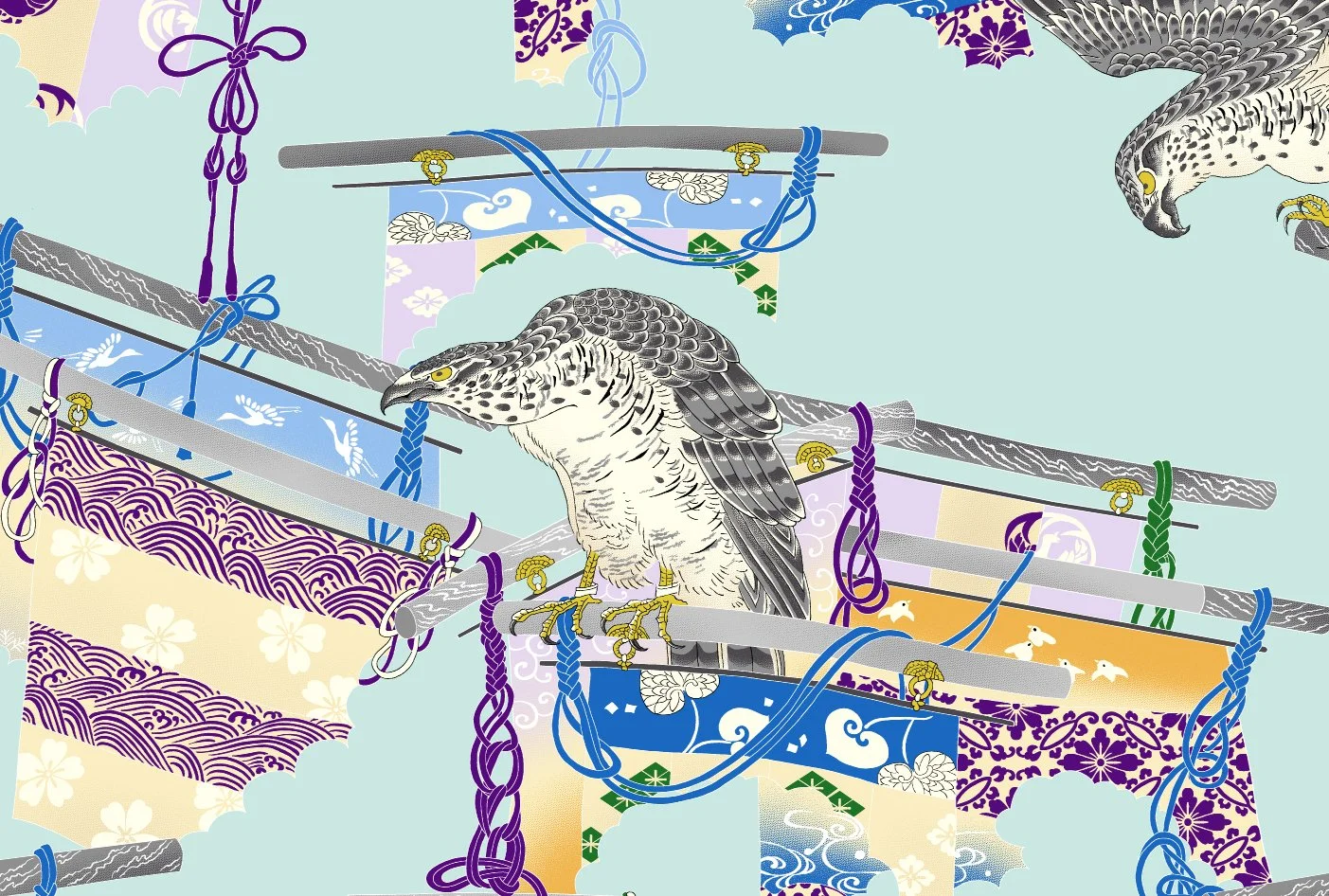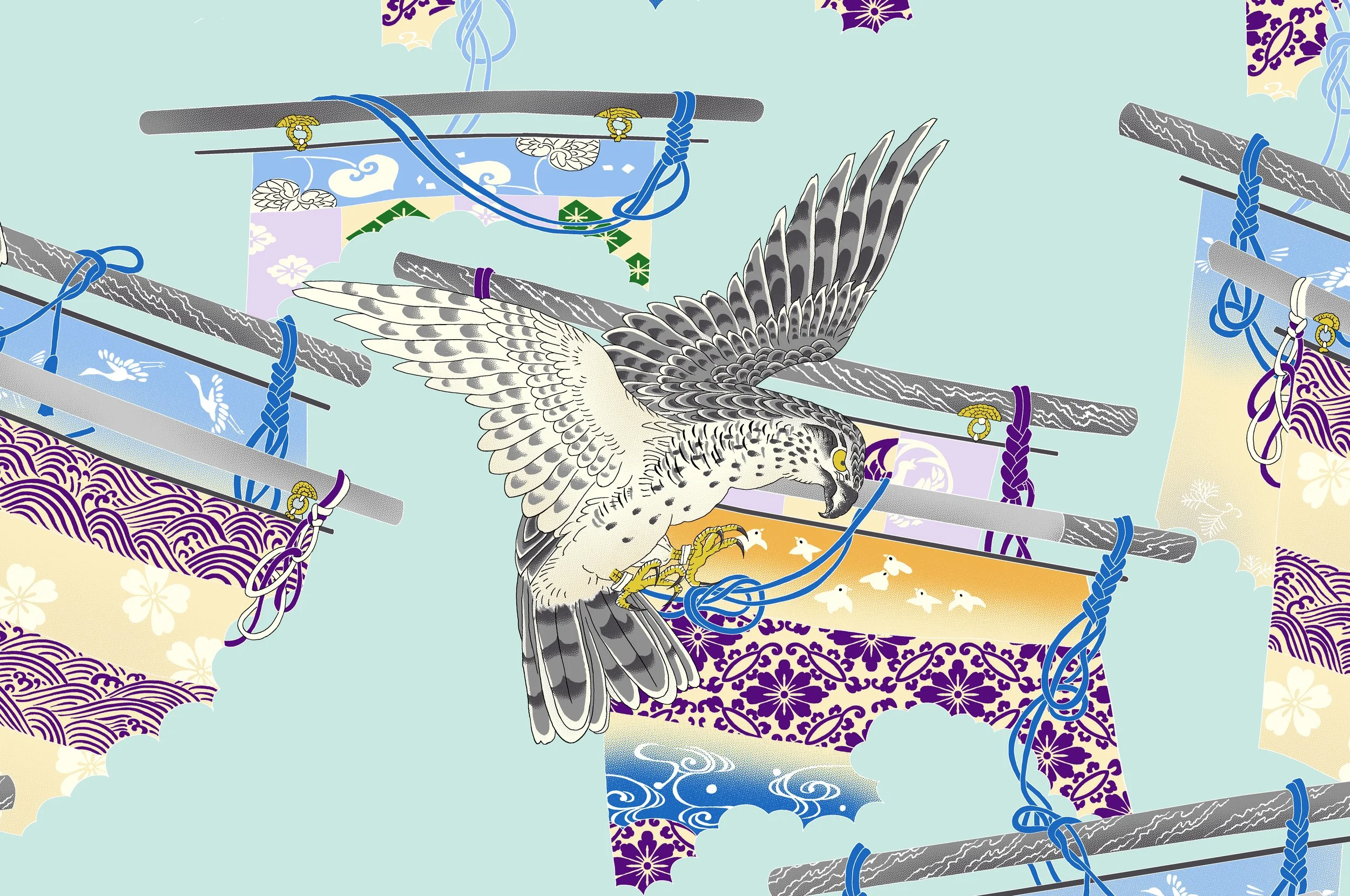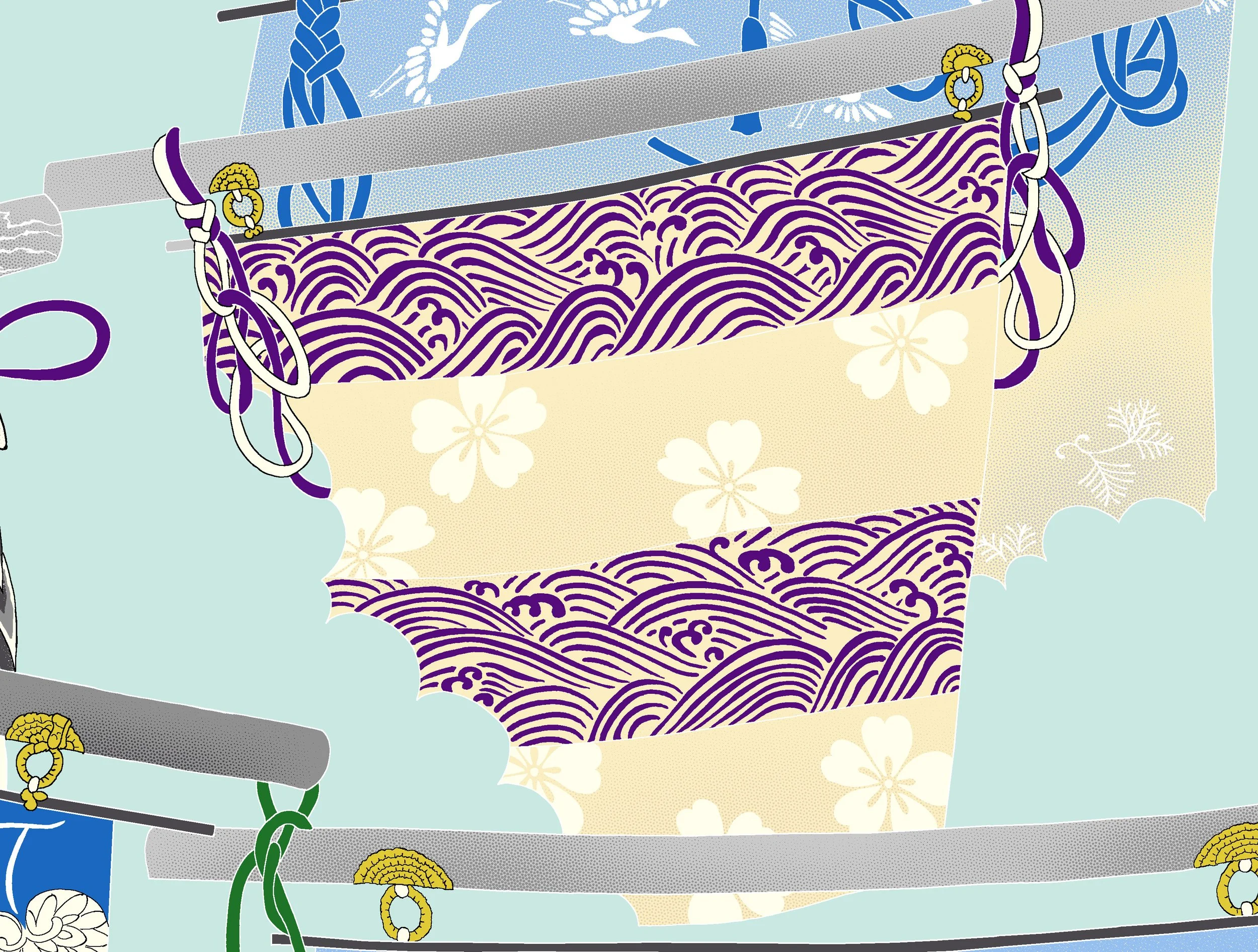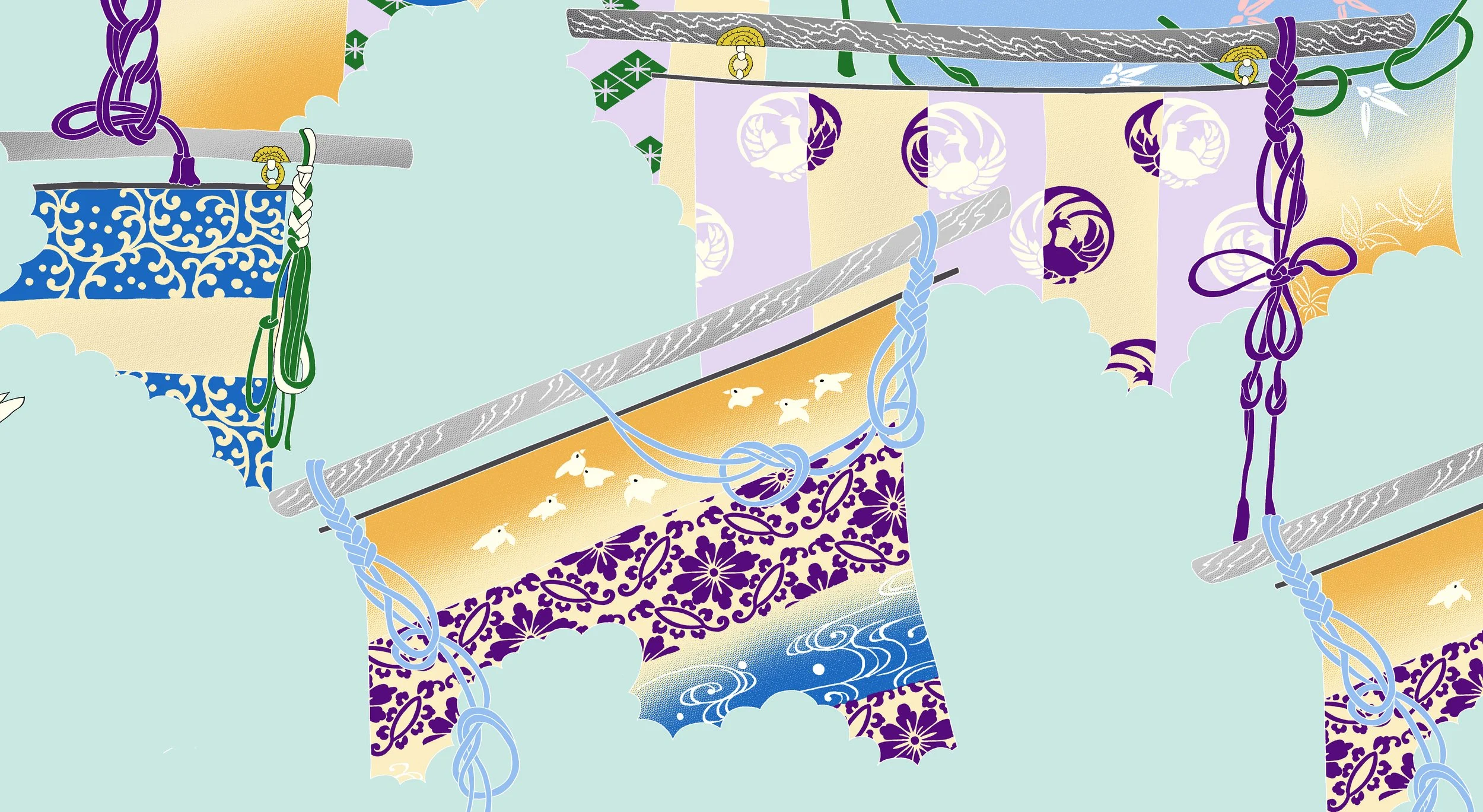Pagong New Pattern - “The Hawk and Folding Screen”
Hawks are a common motif in boys' baby clothes and are frequently seen in Shichigosan kimonos even today. These ferocious birds are known for their impressive sharp beaks and claws, as well as their keen eyesight, which allows them to spot and capture prey from great distances. Historically, feudal lords admired and favored hawks for their bravery.
During the late Edo period, the hawk pattern became popular in kimono design and was often combined with other auspicious designs. Typically, this pattern includes a folding screen alongside a hawk. A folding screen is a piece of indoor furniture used as a partition, and pairing a hawk with a folding screen is a common artistic motif.
The hawk pattern symbolizes the bravery of military leaders and their ability to discern the truth. It represents the desire to embrace and maintain creativity, intelligence, vitality, protection, spiritual awareness, and power. Additionally, falconry signifies authority and military strength, embodying hope for the success and achievements of one's children.
Hawk Attack
In the skies above, the hawk glides effortlessly, its sharp eyes scanning the ground below for movement. With every flap of its wings, it embodies precision and power. As soon as it spots its prey—a small animal unaware of the imminent danger—it descends in a swift, calculated dive.
The hawk extends its talons, designed specifically for gripping and clutching. In a split second, it strikes with incredible speed and force, capturing its target with an unyielding grip. The release of adrenaline is palpable, both in the bird and the prey, as the attack unfolds with breathtaking intensity.
This hawk attack is not just a demonstration of physical prowess; it is a reflection of nature’s intricate balance, showcasing the predator-prey relationship that sustains ecosystems. With its keen instincts and remarkable skill, the hawk is a formidable hunter, epitomizing the wild's raw beauty and brutality.
Hawk Perch Hunting:
Hawk perch hunting is a method that takes advantage of a hawk’s natural behavior. These raptors prefer high vantage points—such as tall trees, cliffs, or man-made structures—where they can patiently scan their surroundings for movement. From these perches, they watch for small mammals, birds, or reptiles, striking with precision when the opportunity arises.
Understanding a hawk’s hunting patterns and the surrounding terrain is key to observing or utilizing this strategy effectively. Ideal perches provide a wide, unobstructed view, allowing the hawk to detect prey from a distance. Remaining still and blending into the environment can prevent disturbance, whether one is observing or working with hawks in falconry. Patience is essential, as hawks may wait long periods before making a move.
Perched high upon a branch, the hawk surveyed the land with piercing eyes, its gaze sweeping across the terrain below. A slight tilt of its head signaled keen awareness, listening to the wind and the faintest rustling in the underbrush. Then—movement. Muscles tensed, wings spread, and in a flash, the hawk plunged toward the earth, talons outstretched, seizing the moment with lethal precision.
Folding Scrolls: Wave, Sakura, Crane
The folding scrolls in this exquisite collection showcase three iconic motifs from Japanese culture: waves, sakura (cherry blossoms), and cranes.
Wave: The wave pattern signifies strength and the ebb and flow of life, echoing the power of nature. Its fluid curves intertwine with the fabric, evoking a sense of movement and tranquility.
Sakura: The Sakura motif captures the fleeting beauty of spring. Each delicate blossom tells a story of renewal and transience, reflecting the heart of Japanese aesthetics. The soft pink hues remind us of the cherished moments in life.
Crane: The crane represents longevity and good fortune, highly regarded in Japanese tradition. Its graceful form, often depicted in flight, symbolizes hope and peace, embodying the spirit of resilience.
Together, these elements create a harmonious blend of nature and culture, perfect for those who appreciate the artistry of traditional Japanese textiles. Embrace the elegance of these folding scrolls in your attire and witness the beauty of Japan's heritage come alive.
Folding Scrolls: Phoenix, Birds, Flowers
Phoenix: The phoenix, a legendary bird in various mythologies, symbolizes rebirth and immortality. Often depicted in fiery colors, it embodies transformation. Rising from its ashes after consuming itself in flames, it represents resilience and the cyclical nature of life. This imagery encourages embracing change, finding strength in challenges, and emerging stronger. The phoenix serves as a reminder of renewal and the endless possibilities of new beginnings.
Birds: Birds inspire art and fashion, influencing textile designs in kimono and aloha shirts. Their vibrant colors and unique patterns enhance fabrics, celebrating nature's beauty. Wearing these garments connects enthusiasts with nature and emphasizes the link between creativity and the environment. Supporting these traditions keeps cultural practices alive and raises awareness of birds' essential role in ecosystem health.
Flowers: Flower patterns inspired by traditional Japanese motifs showcase the artistry of kimono textiles. These vibrant designs reflect the harmony between culture and nature, making them perfect for any occasion. The colors evoke the beauty of Japan's landscapes, allowing you to wear a piece of history and art. Embrace the elegance of flowers with our unique collection that beautifully blends the charm of kimono traditions.





